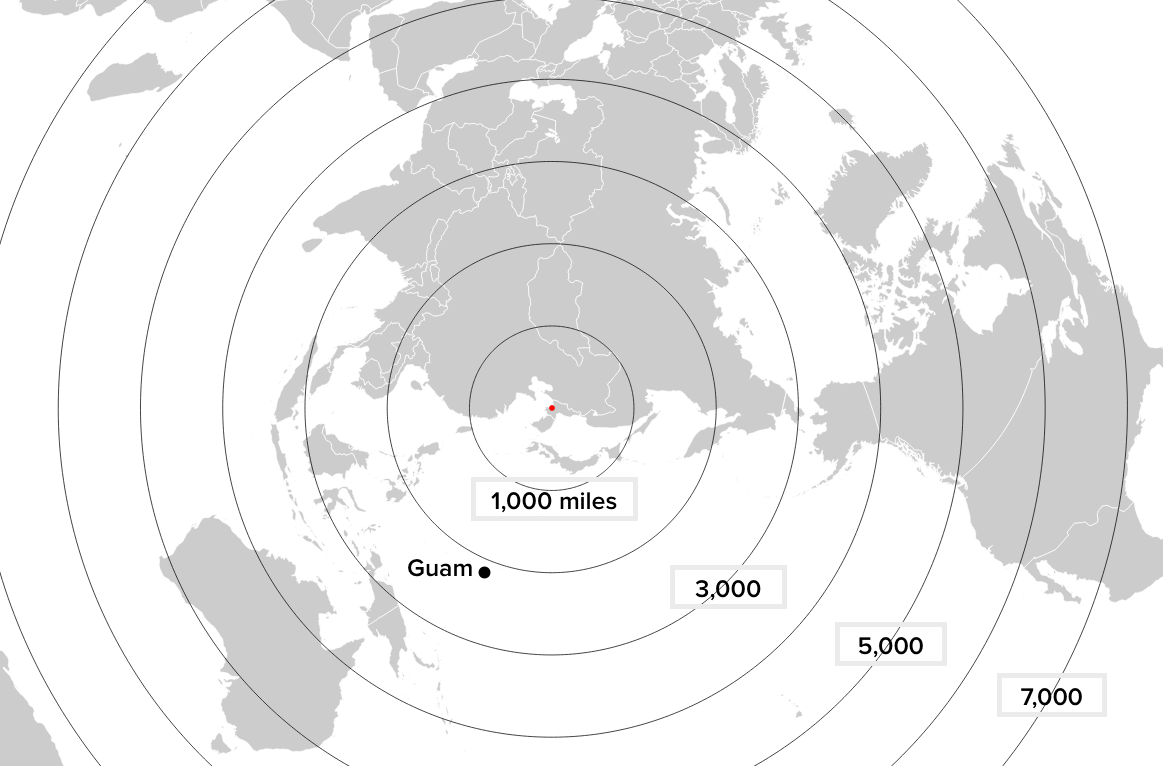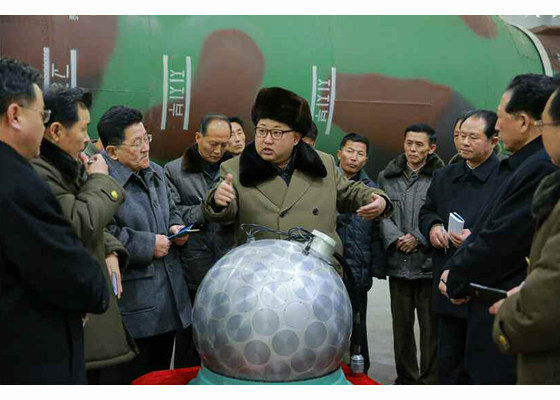
The missile that North Korea launched on Sunday wasn’t the test of an intercontinental ballistic missile that its leader, Kim Jong Un, threatened in a New Year’s Day speech. Most security analysts think the pariah nation is not yet able to launch a missile at US territory.
But it did mark worrying progress in a missile program that has seen many failures. The new missile not only worked as planned, but also could someday lob a nuclear warhead at Japan.
Here’s what you need to know about the threat from Pyongyang:
The missile was a land-based version of a system designed to fire from a submarine.
According to KCNA, the North Korean news agency, the missile was a new design called the Pukguksong-2. This video shows that it was a modified version of a missile called the KN-11, which was successfully launched from a submarine last August, after a series of earlier failures.
For a missile to be launched from a submarine, it must first pop out of its tube and above the waves, after which the fuel ignites and the missile speeds it on its way.
As this sequence of images shows, that’s what North Korea’s latest missile did, except the tube was mounted on the back of a Caterpillar truck rather than in the hull of a submarine.
@inbarspace @mhanham @ISNJH @Joshua_Pollack @MissileDefAdv @DaveSchmerler @OpallRome Nice pic. That's gas gen cloud… https://t.co/DDMyssfqbK
While this isn’t the usual way to launch a modern land-based missile, modifying a sub-launched missile to be fired from a tube on land has been tried before — notably by Russian engineers in the 1950s.
“It’s a very clever way of keeping your missiles safe and dry,” Markus Schiller, a German engineer who runs ST Analytics, an aerospace consulting firm, told BuzzFeed News.
And for North Korea’s rocket scientists, who have had big problems developing conventional land-based missiles with extended ranges, the design makes perfect sense.
“We’ve sort of been expecting that,” David Wright, co-director of the Global Security Program at the Union of Concerned Scientists, told BuzzFeed News.
The new missile poses a threat to Japan.
Experts say that the shape of the flare from the new missile confirms KCNA’s claims that it runs on solid fuel. That’s important, because solid-fuel rockets can be ready to launch at a moment’s notice.
By contrast, North Korea’s existing fleet of short-range Nodong missiles, which are based on old Russian Scuds, must be fueled with liquid kerosone just before use. So each launcher requires an entourage of supporting fuel vehicles, which Pyongyang moves around to keep spy satellites guessing.
“They’re constantly moving their trucks around the country,” Melissa Hanham, a senior research associate at the Center for Nonproliferation Studies in Monterey, California, told BuzzFeed News.
While the new missile traveled only about 310 miles, splashing into the Sea of Japan, it was deliberately lofted in a high arc. Aimed on a lower trajectory, it would probably have a range of about 775 miles, according to calculations by Wright from the earlier submarine launch.
That would put much of Japan in range of the new missile. The timing of the launch, just as Japanese Prime Minister Shinzo Abe was meeting with President Donald Trump, also suggests that its goal is to threaten Japan.
At the same time, North Korea has been advancing its nuclear weapons program. The yields from its nuclear tests, measured by the seismic waves they send through the Earth, suggest that the goal is to develop a small warhead to fly on its missiles. And in March 2016, Kim posed with a shiny metallic sphere purported to be such a device.
Pyongyang has yet to test anything that could threaten US territory.

North Korea is also developing longer-range missiles. The best known is the Musudan, a liquid-fueled rocket with a poor track record.
The Musudan was tested eight times in 2016, with all but one test ending in an explosion on the ground or shortly after launch. From the single successful flight, again in a high arc, Wright calculated that the missile has a maximum range of 2,000 miles. That’s just short of range needed to threaten US military bases on the Pacific Island of Guam — even if North Korea’s engineers can solve the system’s reliability problems.
Reaching the continental US would require a multi-stage intercontinental ballistic missile, or ICBM, and Pyongyang has yet to show it is capable of building and launching such a missile.
But North Korea will keep trying, and these are the systems it’s working on.

A few years back, security specialists were speculating that Pyongyang might try to modify its space launch system to produce an ICBM. But experts now believe the system, which has put small satellites into orbit, isn’t up to the job.
In January 2013, South Korea revealed that it had analyzed debris from the launcher’s first stage and found it to be nothing more sophisticated than a cluster of four Nodong rockets.
More likely candidates are missiles called the KN-08, which appeared in the background when Kim posed with the purported nuclear warhead, and the newer KN-14.
The KN-08, which has three stages, first appeared at a military parade in Pyongyang in 2012. At the time, Schiller dismissed the event as a “dog and pony show,” concluding from photos that the missiles were simply mock-ups.
The KN-14 is a two-stage missile that according to Wright looks like a more plausible candidate for an ICBM that might threaten the US. “That’s the one I would keep an eye on,” he said.
Like the Musudan, the KN-08 and KN-14 are thought to use a high-energy liquid fuel called unsymmetrical dimethylhydrazine. Neither missile has been launched, but in April 2016 North Korea ran a successful ground-based test of a large rocket engine that could power the first stage of either.
So if Kim delivers on his promise of testing an ICBM, one of these missiles is the likely candidate. Based on the Musudan tests, however, most security analysts don’t expect the missiles to work at first try.
“My best guess is we will have some ICBMs launched in 2017, and they will probably fail,” Hanham said.
Even a failed ICBM test would give Trump a major headache.
A technical failure would still trigger a political crisis, however. After Kim’s New Year speech, Trump, then president-elect, tweeted, “It won’t happen!”
North Korea just stated that it is in the final stages of developing a nuclear weapon capable of reaching parts of the U.S. It won't happen!
Now in office, he has a couple of options: engage in carrot-and-stick diplomacy, like the Obama administration tried with Iran, or launch a military attack to destroy North Korea’s nuclear and missile facilities. The first he has previously scorned. The second risks destabilizing the entire region.
“The problem is there are no good options,” Hanham said.

